How To Make Sauerkraut
4.9
(25)
Your folders
Your folders
Prep Time: 1500 minutes
Total: 1500 minutes
Servings: 10
Author : Minimalist Baker
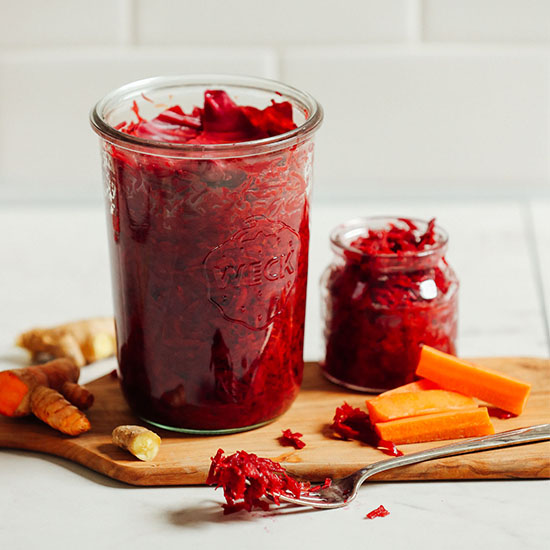
Ingredients
Export 6 ingredients for grocery delivery
Instructions
Step 1
Sterilize any equipment you will be using for fermentation, especially the jars (we prefer using mason jars or these Weck Jars that are about 850 ml). It is extremely important that everything is sterilized to allow for proper fermentation. Do so easily by pouring boiling water over clean jars and lids and drying completely. Let come back to room temperature before adding ingredients.
Step 2
Add finely grated cabbage (we used our mandolin) to a large mixing bowl and top with 1 1/2 teaspoons sea salt (or the lower end of the suggested range if making a different batch size). Wash hands thoroughly and massage cabbage for ten minutes. The cabbage should start softening, shrinking in size, and releasing water (see photo). Continue massaging until this happens.
Step 3
Add shredded beet, carrot, ginger, turmeric, and garlic and massage once more with clean hands for 4-5 minutes until thoroughly combined (see photo). Then taste test and adjust flavor, adding more salt for saltiness, grated ginger for more zing, or garlic for more intense garlic flavor.
Step 4
Use your clean hands to put the sauerkraut mixture into your sterilized jars and press down firmly to pack. There should be enough liquid from the massaging to rise up and cover the vegetables. If this doesn't happen, top with filtered water until covered (it is unlikely that you will need to add water).
Step 5
Also, make sure there is plenty of room (about 1 1/2 inches) between the contents and the lid so it has room to expand. Seal with a lid and set on the counter where there's not much direct sun exposure or in a cabinet. The ideal temperature for fermentation is above 65 degrees F (18 C), so try to keep your environment on the warmer side to encourage proper fermentation.
Step 6
Fermentation can happen as quickly as 24 hours if your space is hot, or it can take as long as 2 weeks, (again, depending on the environment). We found our sweet spot to be about 10 days.
Step 7
During this fermentation process, open your jars once per day to release air (you should feel pressure release and see air bubbles when you open the jars). Press down with a sterilized object such as a spoon or the bottom of a drinking glass to ensure that the vegetables are still completely covered in the liquid. Doing so helps encourage proper fermentation.
Step 8
The longer it sits and ferments, the tangier it will become, so sample occasionally with a clean utensil to test and see if it is at the right stage for you. Once it has reached the desired tanginess, cover securely and transfer to the fridge, where it should keep at least 3 months and up to 6 months. When serving, don't double dip to avoid contamination.
Top similar recipes
Curated for youYour folders
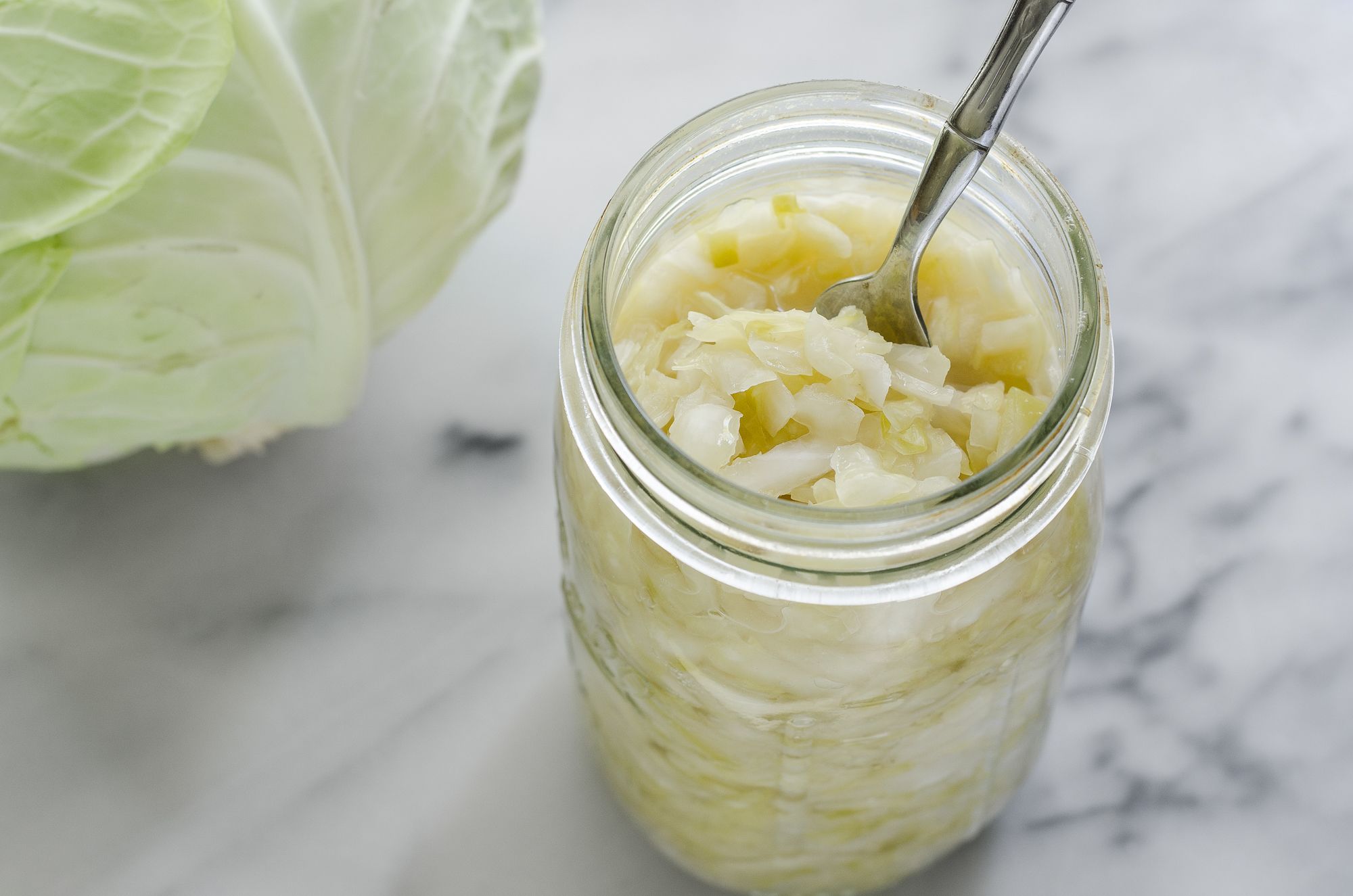
 242 views
242 viewsHow to Make Sauerkraut
thepioneerwoman.com
5.0
(1)
Your folders
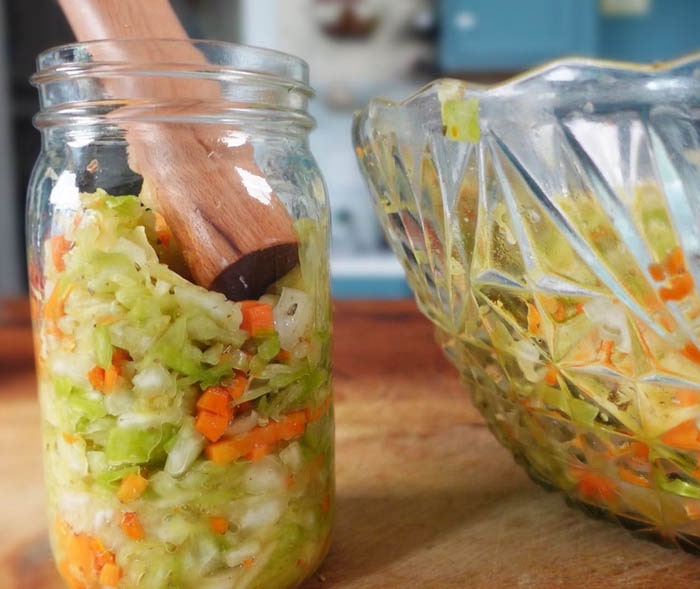
 197 views
197 viewsHow To Make Sauerkraut
cleanfoodliving.net
Your folders
 88 views
88 viewsHow To Make Sauerkraut
cleanfoodliving.net
Your folders
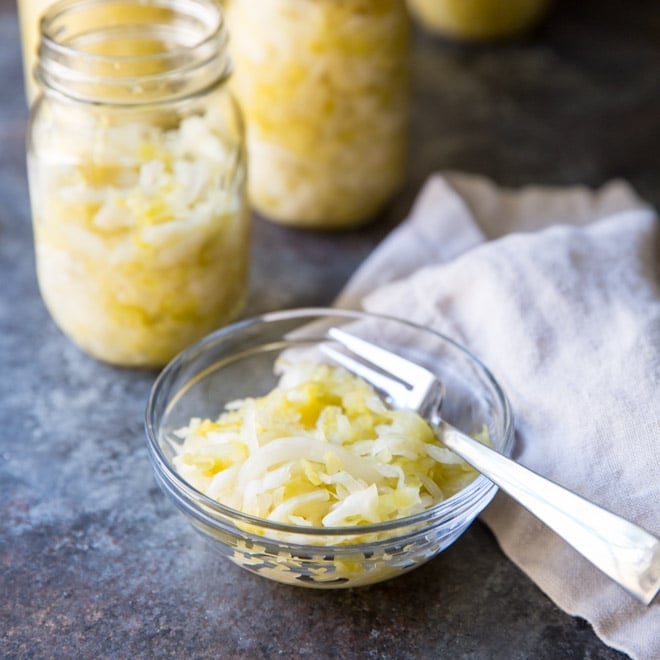
 427 views
427 viewsHow to Make Sauerkraut
culinaryhill.com
5.0
(2)
7200 minutes
Your folders

 389 views
389 viewsHow to make sauerkraut
simpleveganblog.com
5.0
(4)
Your folders

 239 views
239 viewsHow to Make Sauerkraut
theprairiehomestead.com
4.9
(64)
Your folders

 257 views
257 viewsHow To Make Sauerkraut
tastingtable.com
5.0
(37)
Your folders
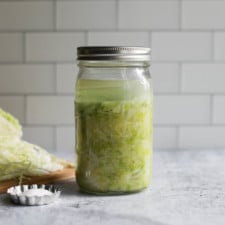
 165 views
165 viewsHow to Make Sauerkraut
therealfooddietitians.com
4.8
(17)
Your folders

 173 views
173 viewsHow to make sauerkraut
bbcgoodfood.com
Your folders
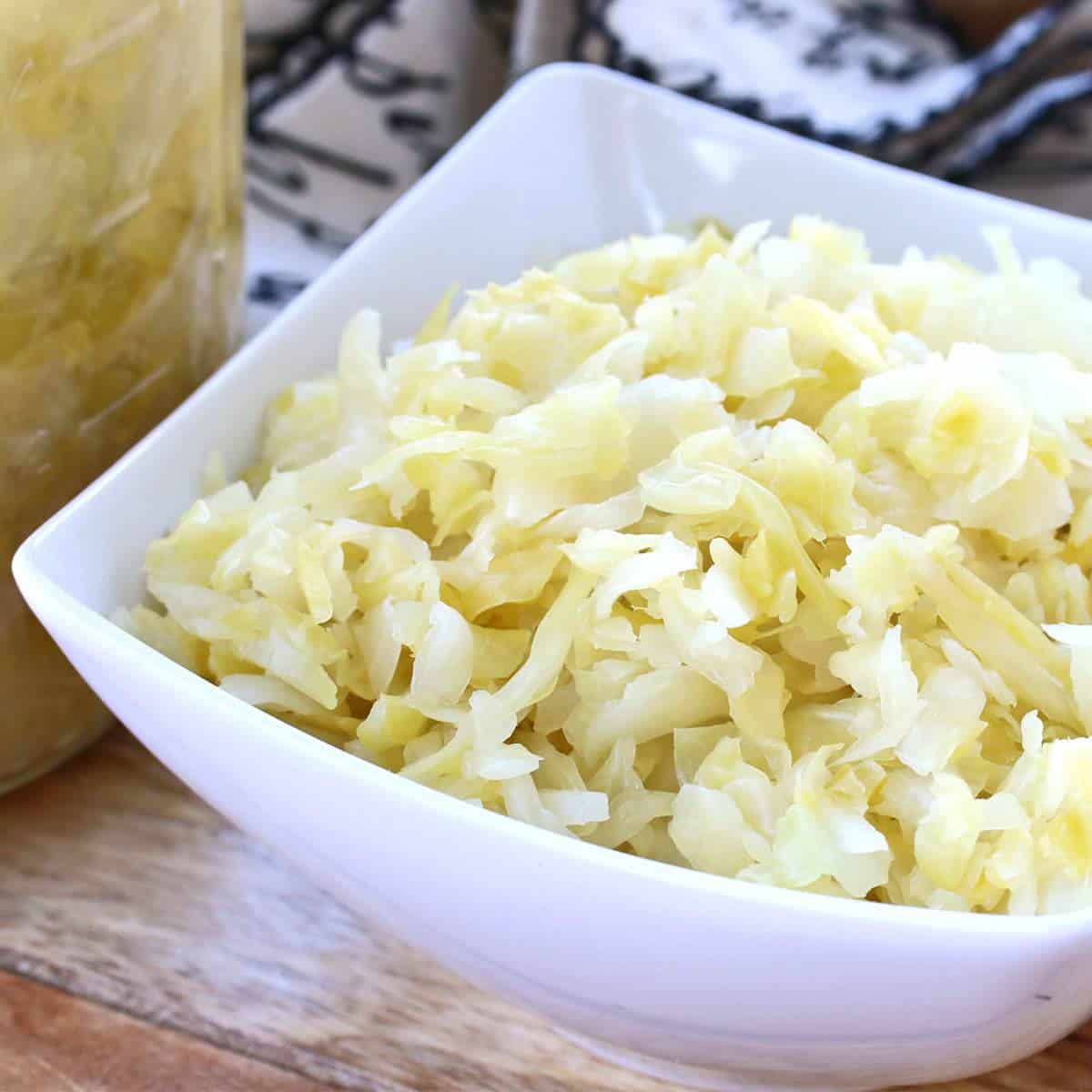
 90 views
90 viewsHow to Make Sauerkraut
daringgourmet.com
5.0
(171)
Your folders
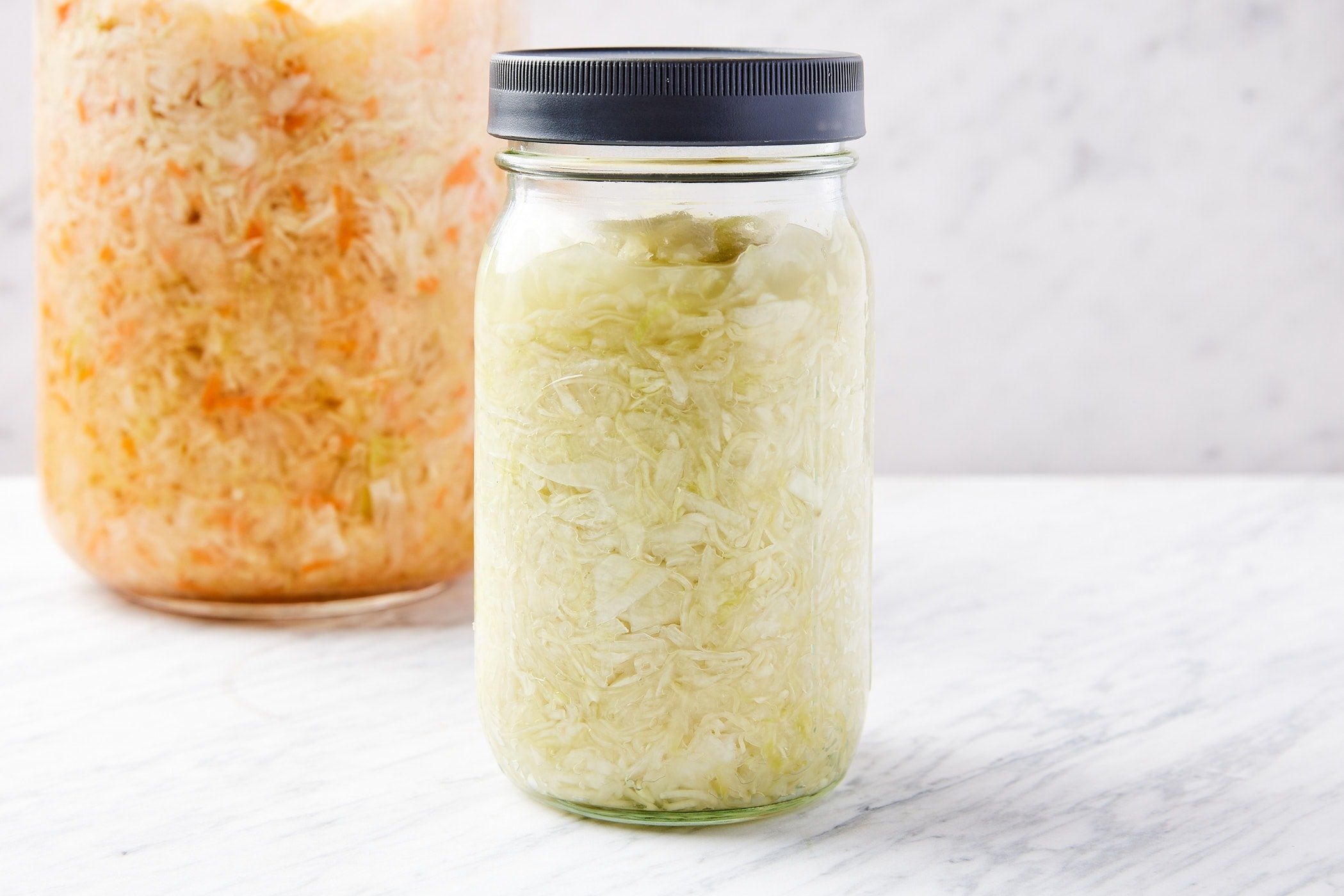
 91 views
91 viewsHow to Make Homemade Sauerkraut
wyseguide.com
5.0
(10)
Your folders

 162 views
162 viewsHow to make Sauerkraut from Scratch
mygerman.recipes
Your folders
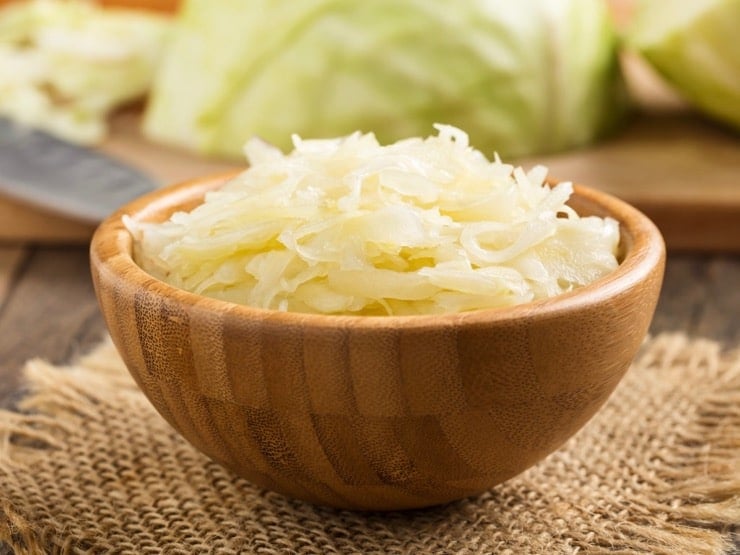
 286 views
286 viewsHow to Ferment Cabbage and Make Sau...
toriavey.com
Your folders
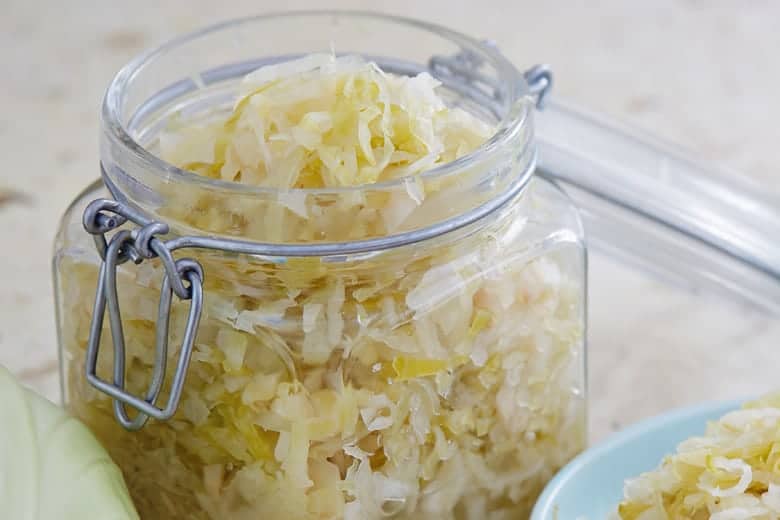
 220 views
220 viewsHow to Homemade Sauerkraut
savoryexperiments.com
4.9
(7)
Your folders

 206 views
206 viewsHow to Make Sauerkraut Recipe in a ...
fareisle.com
5.0
(1)
Your folders
 270 views
270 viewsHow to Make Your Own Sauerkraut | T...
myjewishlearning.com
Your folders
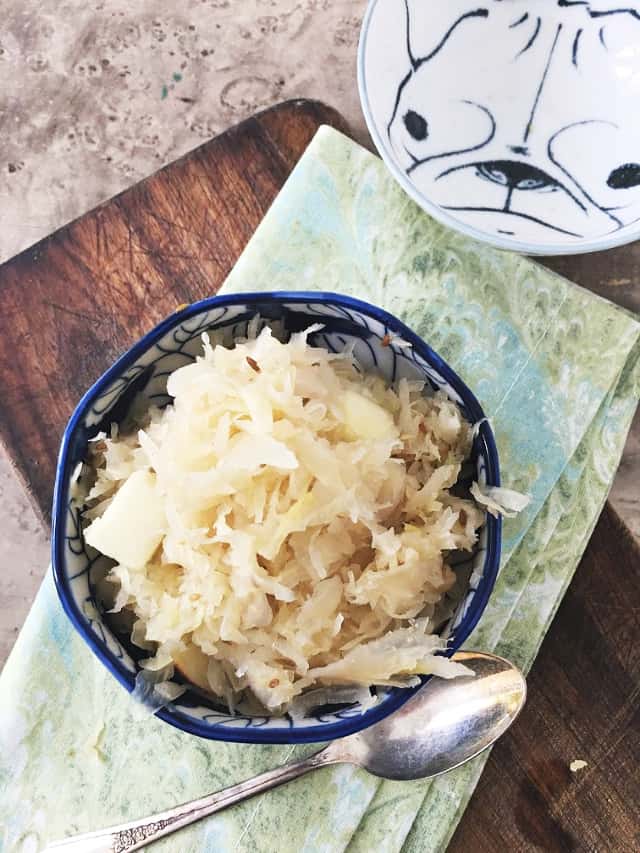
 1531 views
1531 viewsHow To Cook Canned Sauerkraut
loavesanddishes.net
5.0
(14)
13 minutes
Your folders
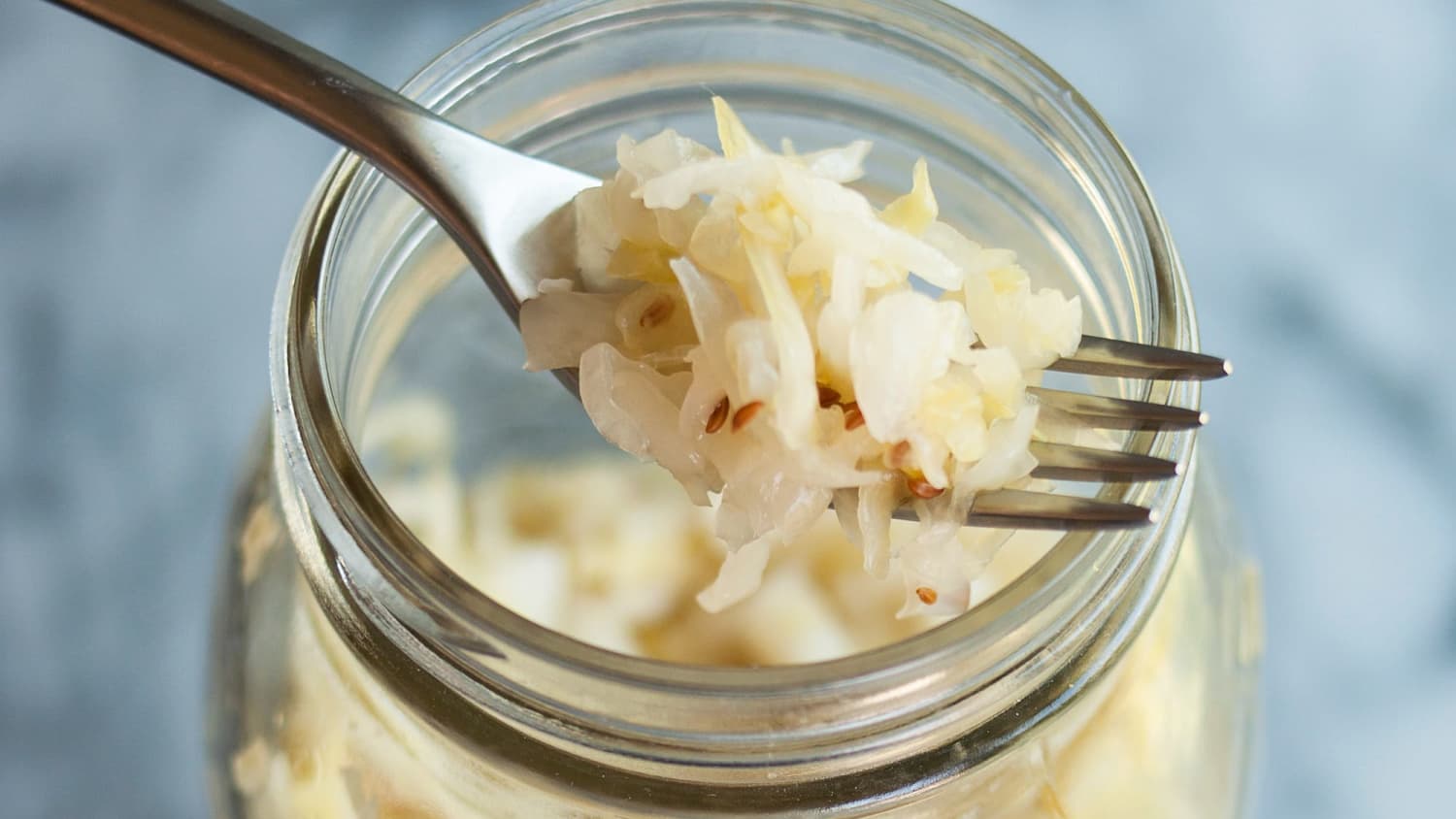
 775 views
775 viewsHow To Make Homemade Sauerkraut in ...
thekitchn.com
4.6
(21)
Your folders
![How to Make Sauerkraut in a Jar [THE COMPLETE GUIDE]-image](https://www.makesauerkraut.com/wp-content/uploads/2019/07/how-to-make-sauerkraut-in-a-jar-bpi.jpg)
 293 views
293 viewsHow to Make Sauerkraut in a Jar [TH...
makesauerkraut.com
4.2
(22)
20 minutes